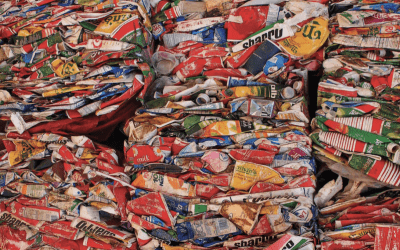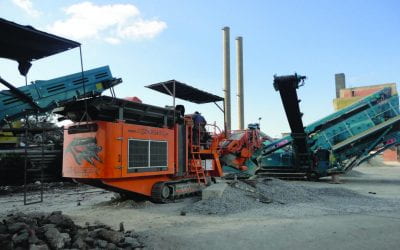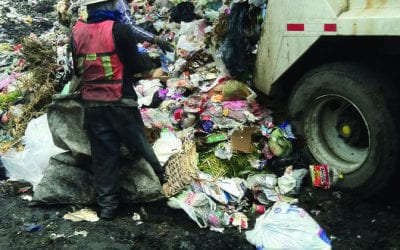Trash in the Water
An Indigenous People Confronts Waste
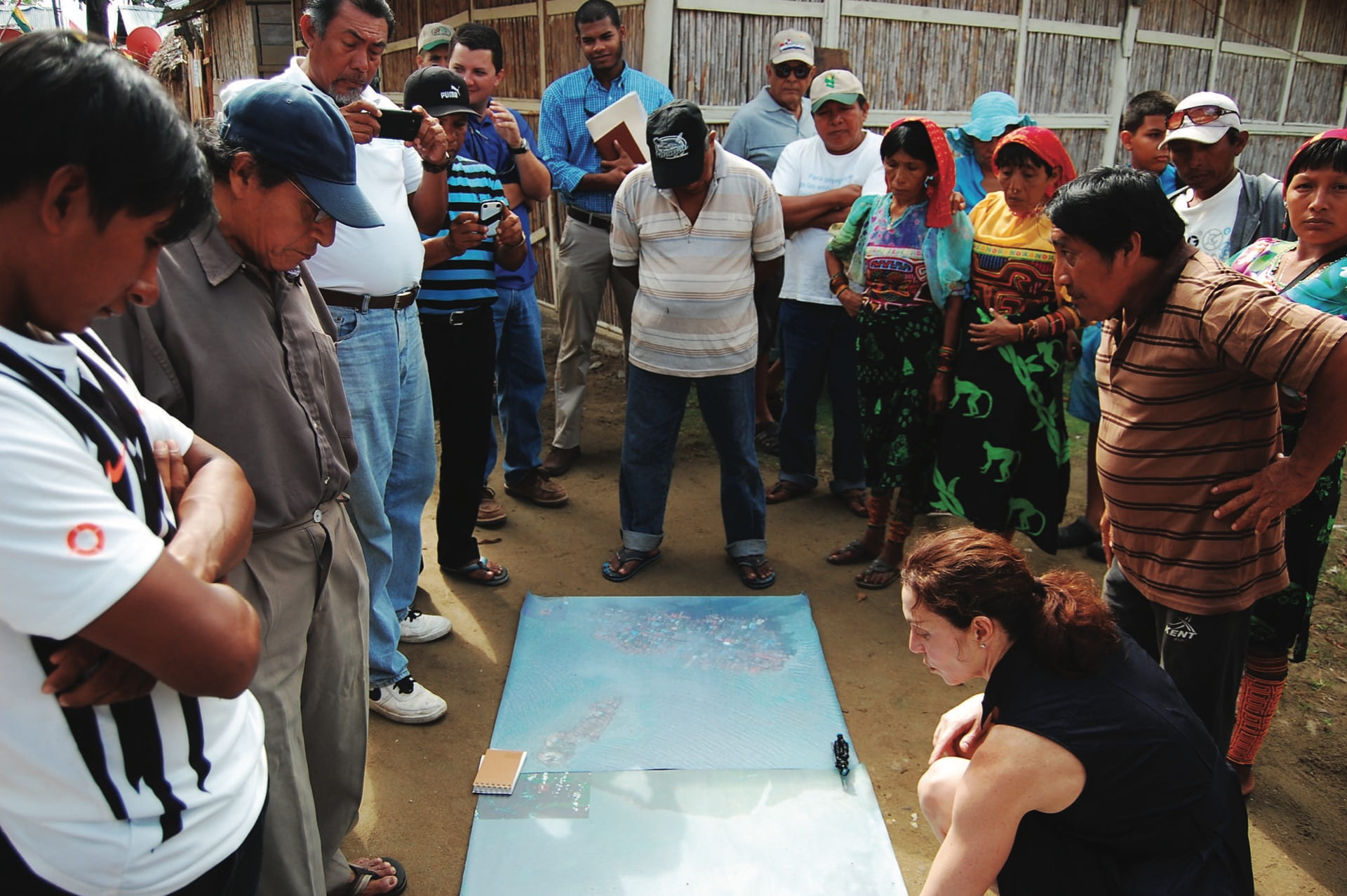
Guna community members meet at the schoolhouse to discuss waste issues. Photo by Libby McDonald and James Howe.
The Guna or Kuna, an indigenous people of Panama, suffer from the same waste problems as the rest of the world, with the added complications caused by life on tiny, crowded coral islands. The Guna, originally mainland dwellers, moved offshore in the 19th century, thus escaping mosquitoes, snakes, and the diseases spread by mosquitoes while facilitating access to foreign trading boats. Today, of the forty-nine villages in the autonomous indigenous reserve called Guna Yala, all but ten are located on islands along the northeast Caribbean coast, with populations ranging in size from a few hundred to several thousand.
Until recently, the small island populations kept their villages clean without great effort. Everything went into the ocean: human waste, the remains of household cooking, and even glass bottles and other trade goods. But populations grew, processed foods and manufactured goods increased, and soon plastic and other refuse started turning up in the water, on the ocean floor, on the beaches, and in the coastal mangroves. Tourists, who contribute significantly both to the local economy and to the trash problem, started complaining, and the Guna themselves were dismayed and repulsed. Although more than half the Guna population has moved to the city in recent decades, we have witnessed that the garbage crisis has not eased for the more than thirty thousand who have stayed in Guna Yala.
Problems of modernity have hit especially hard at the western end of the coast, in the region called Carti, which has for many years hosted cruise ships and adventuresome tourists who flew in to village air strips. In the last five years tourism has grown exponentially, promoted by a newly paved road leading from the Pan-American Highway over the mountains to Carti on the north coast. Tourists from Panama City now arrive by car in a few hours, sometimes several thousand per week during the winter tourist season, mostly to swim and relax on uninhabited “desert” islands a few miles offshore which have been converted into modest, Guna-run resorts. And as the Carti population has embraced the expanding tourist economy, dependence on imported foods and manufactured goods has increased apace, along with the question of how to dispose of their remains—a dilemma the Kuna share with other communities on the Caribbean shore of Central America blessed by tourism. In Carti, some of the waste is now taken to a mainland dump, but most of it still ends up in the ocean.
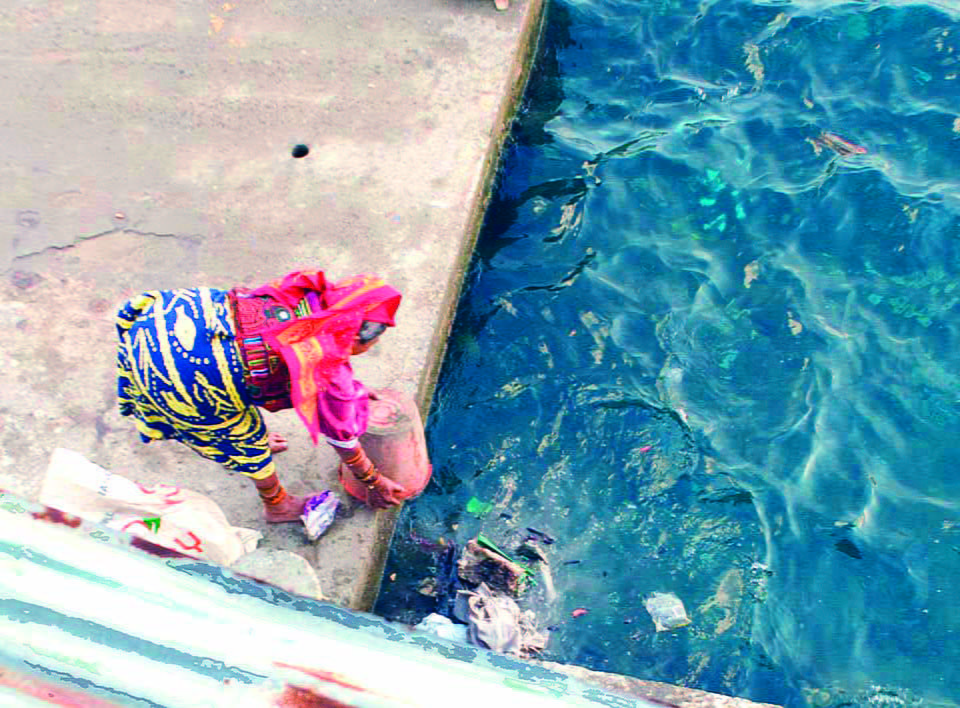
Until recently, everything went into the ocean—the old disposal way. Photos by Libby McDonald and James Howe.
After an exploratory study by a Panamanian anthropologist for the Inter-American Development Bank (IDB) and a series of consultations with Guna focus groups identified waste as a critical issue in the region, the Bank asked co-author Libby McDonald at MIT’s Community Innovators Lab (CoLab)—an organization devoted to the collaborative, participatory development of small, waste sector businesses in low income countries—to design a waste system for the four principal Carti islands, Mulatupu, Yantupu, Suitupu and Tupile. McDonald in turn sought advice from James Howe, an MIT anthropologist with long experience in Guna Yala, the co-author of this article. The project, dubbed “Basura Cero” (“Zero Waste”), joined forces with IDIKY, the research and development arm of the Guna General Congress, and with ANCON, a Panamanian NGO committed to environmental sustainability. Accompanied by students, expert advisors, and Guna representatives of IDIKY and ANCON, McDonald and Howe paid a series of visits to Carti between 2012 and 2014 to measure household waste output, observe current practices, map the villages using kite-mounted cameras, observe current economic practices, and assess possible routes for transporting recycled materials to the city. At the same time, the team began consulting and collaborating with the four villages and encouraging the formation of local recycling associations.
As is true elsewhere, the waste problem breaks down into a number of problems calling for separate solutions. The Guna already recycle aluminum cans, compacting them by hand (or more precisely, by foot or rock) to sell to Colombian trading boats, and a market exists in Panama City and Colon for recycled plastic; but for both materials a supply chain had to be created, starting at collection points in the island villages through a mainland sorting center, all the way to recycling companies in the city. Organic garbage like banana and plantain skins, which makes up the greatest part of the waste stream, needed to be composted, and trash that can be neither composted nor recycled had to be transported to a true sanitary landfill on the mainland, replacing the noxious open-air dumpsite.
Medical waste presents a special problem in the islands, most of all in the materials contaminated by disease and the “sharps”—needles, scalpels, etc.—used in treatment. The region surrounding the four project villages is served by a single clinic on the island of Carti Suitupu, supported by a smaller facility on another island a few miles away. During the week, medical waste is collected at the Suitupu clinic in plastic bags, color-coded for hazardous and non-hazardous waste and sharps are collected in special dedicated containers. Unfortunately, both bags and sharps containers sometimes run out, forcing dangerous improvisations by medical personnel. Once each week, minimally trained young janitors take the bags by boat to the mainland dumpsite a few minutes away in a mangrove thicket, where they toss the bags on shore, douse them with gasoline and set them alight. The fires, which contaminate the air, water, and soil, often fail to consume the waste, especially the sharps. Though well aware of the problem, the clinic’s doctors and nurses have until now had few solutions within reach.
For all kinds of waste, the answer is in part technical and procedural. Engineers and other experts affiliated with Basura Cero are designing a sanitary landfill and a mainland recycling center. The project has purchased a boat and motor to carry waste and recyclables from islands to mainland. Edgar Blanco, from MIT’s Center for Transportation and Logistics, has mapped out recycling routes, identified possible buyers, and analyzed the economic viability of recycling. Students and advisors to the project have designed simple compactors and collection vehicles to move waste and recycling from the shore to the landfill and collection center. To manage the medical waste, the project is procuring new equipment: larger, color-coded bins, improved sharps containers; boots, masks, and other safety equipment; and potentially, a dedicated medical waste autoclave for material, including sharps, that will then be encapsulated and buried. Instruction will be offered to clinic personnel on improved safety procedures, such as double-gloving, i.e., wearing two pairs of latex gloves at once, and dealing immediately with spills, pricks, and other accidents.
Overall, however, technical questions matter less than organization and cooperation. It is especially important to lend a hand and suggest solutions without imposing western ideas or western power on the local “targets” of development or alienating people who have, in truth, seen a lot of projects come and go. The Guna are famous for their hard-won political autonomy and self-management, but things do not just happen by themselves in Guna Yala. In their democratic political system, positive results follow only after hours of discussion, negotiation, and even heated argument. Projects fail if they do not attend to the wider political environment, especially to the will of the Guna General Congress, the ultimate authority for the autonomous reserve, but they must also defer to the jealously guarded autonomy of each community. One can nudge and exhort and suggest and plan but never push, give orders or favor one village over another.
Within each community, much depends on internal politics and long-established but rapidly changing gender roles. Village women—already organized to sweep the streets on three of the project islands, and, at least on Suitupu, the largest of the four, participating in a number of different committees and organizations—are a natural choice to manage recycling, but the formal leaders of some villages (all men) have mixed feelings on the question. Decision-makers must also determine whether to organize recycling as a for-profit business or as an arm of village government, and each must strike a balance between immediate gain for recyclers as they buy and sell aluminum cans and plastic bottles, and long-term benefits for the regional economy and the natural environment. Choosing sites on the mainland for the sorting center and landfill requires still more discussion and negotiation, within and between villages.
At this writing, with planning and consultations well advanced, and with negotiations underway with several crucial project partners—local boatmen, a Guna-run trucking company, and recycling plants in Panama City—the project is moving into implementation. Two of the four islands have already created community gardens and composting centers, and village recycling associations will be launched in mid-December 2014, during a week combining fanfare with enterprise creation workshops provided by MIT’s CoLab on practical matters such as accounting and business management. The first shipment of recyclable materials is expected to depart for the city in late December 2014.
Even as the project gets underway, the situation keeps changing. The Guna owners of little resorts and cabañas located on offshore islands, who are in the process of forming a business association, have expressed strong interest in joining the recycling effort, and it is anticipated that other villages in the region will want to sell bottles and cans to the project islands. Debates proceed, locally and regionally, whether to dedicate a portion of a tax levied on tourists to the project. A new hospital is under construction on the mainland, complicating but also perhaps facilitating the disposal of medical waste. And Carti Suitupu, in particular, has taken the lead in confronting the crisis of rising sea levels caused by global climate change, with tentative plans to move back to the shore and vacate the island. All this will tax the ability of the project’s collaborators to adapt in their quest to solve the trash crisis in Guna Yala.
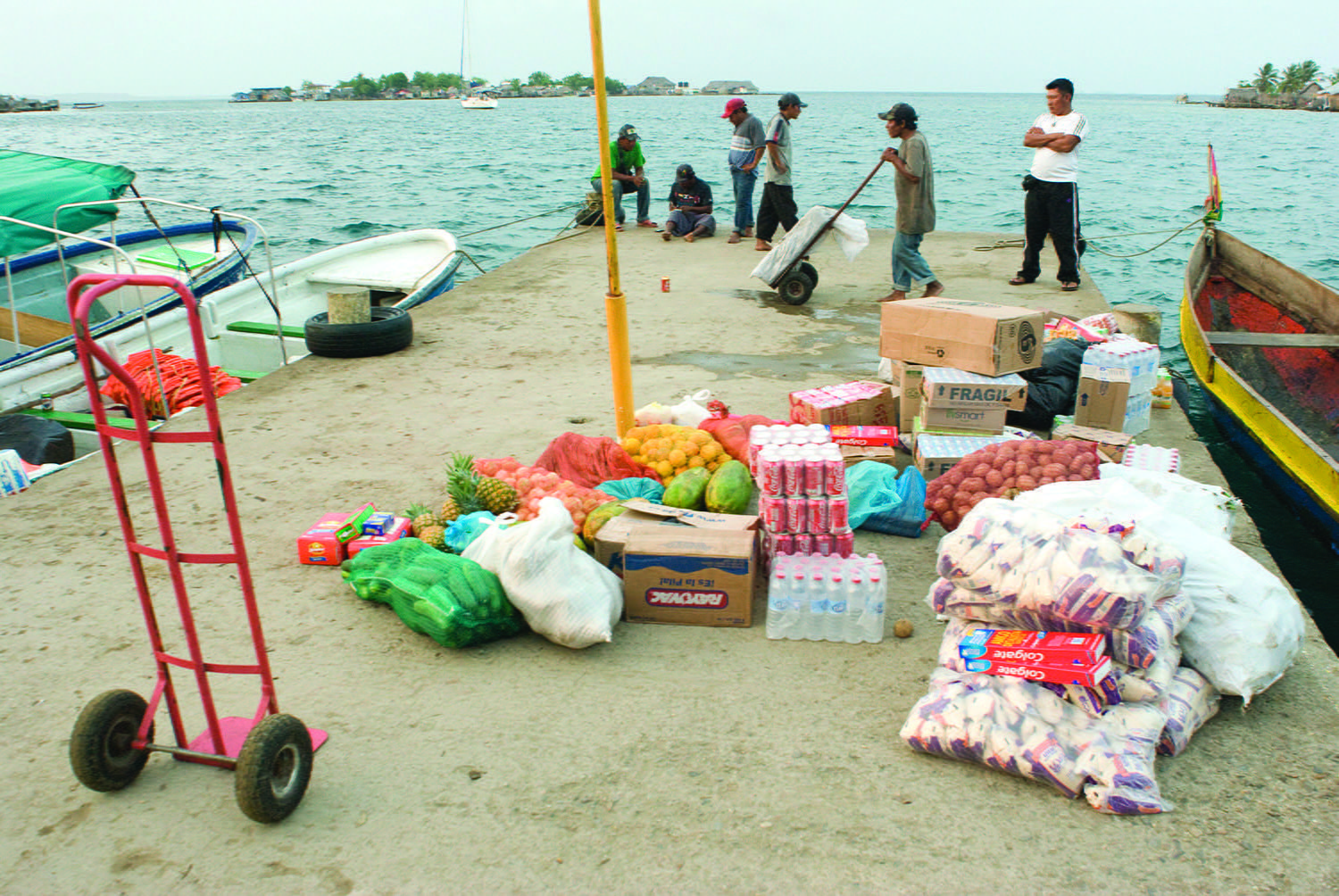
A reflection of the new economy in the increased use of purchased food with disposable packaging, which increases pressure on the waste disposal system. Photos by Libby McDonald and James Howe,
Winter 2015, Volume XIV, Number 2
James Howe is emeritus Professor of Anthropology at MIT and author of several books on Guna culture and history.
Libby McDonald is the Program Director of Global Sustainability Partnerships at MIT’s Community Innovators Lab and Instructor of MIT D-Lab’s class, D-Lab Waste.
Related Articles
Garbage: Editor’s Letter
Religion is a topic that’s been on my ReVista theme list for a very long time. It’s constantly made its way into other issues from Fiestas to Memory and Democracy to Natural Disasters. Religion permeates Latin America…
Buenos Aires, Wasteland
English + Español
Walking down Avenida Juan de Garay last week, I passed a giant black trash bag that had ballooned and burst. Orange peels, tomatoes, candy wrappers…
First Take: Waste
Waste—its generation, collection and disposal—is a major global challenge in the 21st century. Cities are responsible for managing municipal waste. Solid…

